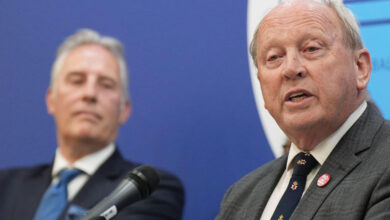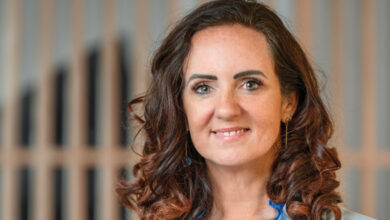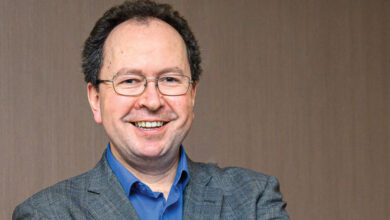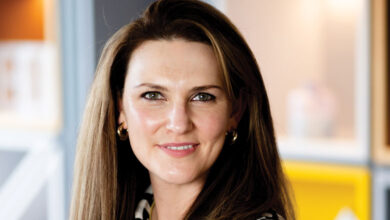Delivering a net zero future
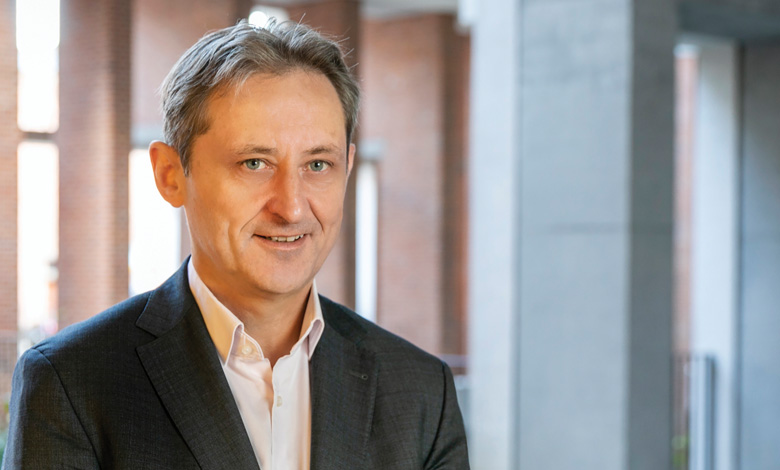
Executive Director of Generation and Trading at ESB, Jim Dollard, talks to David Whelan about the organisation’s ambitious plans for Northern Ireland and the role of the region in ESB’s net zero by 2040 plans.
As a vertically integrated utility company, ESB Group operates right across the electricity market, from generation through to transmission and distribution, and retail.
With stated ambitions to achieve net zero by 2040, the organisation is putting in place the infrastructure and services to achieve this, with a focus on growth in its three core markets of Northern Ireland, the Republic of Ireland, and Great Britain.
The organisation’s footprint in Northern Ireland is long standing and is centred around the development, in 2002, of the 400MW gas-fired combined cycle power plant at Coolkeeragh, Derry. Since then, ESB has, in the last decade, invested in six onshore wind farms in Northern Ireland, contributing over 100MW of renewables.
Beyond generation, ESB acquired NIE Networks, the owner of the electricity transmission and distribution network, in 2010 and also operate the retail business Electric Ireland, supplying electricity and gas to the domestic market.
Dollard was involved in ESB’s entry to the domestic market in 2015, but his current role as Executive Director of Generation and Trading sees him focused on scaling up the company’s renewable generation potential in Northern Ireland.
Dollard explains that Northern Ireland has a significant role to play in the net zero potential of ESB’s core markets.
“Having set ourselves an ambitious target of net zero emissions by 2040 across all aspects of our business, we recognised the need to invest throughout our business network. From a generation perspective, our goal is to increase our renewables footprint from 1GW currently, to 5GW by 2030.
“We are already very large investors in the Northern Ireland market and see huge potential to grow across a range of technologies, utilising our experience from other markets to achieve the net zero ambition.”
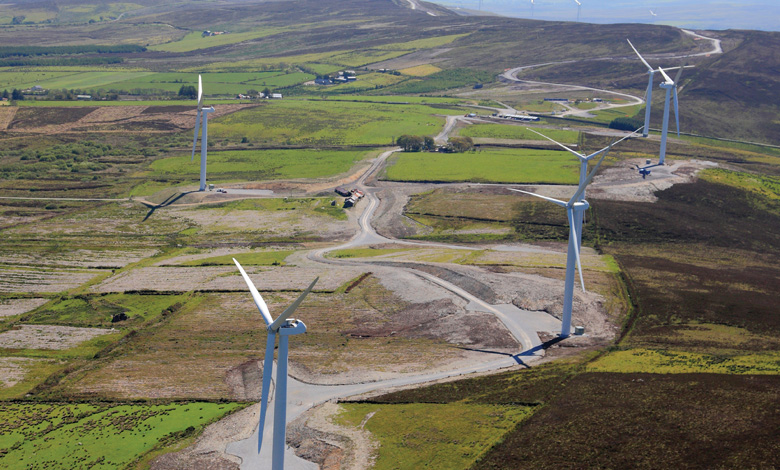
Onshore wind
In the previous decade Northern Ireland was regarded as a global leader in the development of renewable energy from onshore wind. While political instability in recent years has seen some inertia on progress, Dollard believes that huge potential still exists in the region.
Outlining that ESB is targeting upwards of 300MW of new onshore wind assets in Northern Ireland, he points to recent policy developments in the form of the Department for the Economy’s Energy Strategy, which he believes has laid the groundwork for investment and development of renewable assets.
“As one of the fastest adopters of onshore wind in Europe, the North achieved very high penetration of renewables very quickly, driven by good policy. As we head towards net zero, we are encouraging policymakers to push again and harness the further potential that exists in relation to onshore development,” he explains.
Pointing to the likelihood of 2GW ambition of onshore wind development being targeted by policymakers, the Executive Director of Generation and Trading welcomes such a clear signal to markets of the direction of travel.
To this end, Dollard highlights the progression of significant ESB projects in Scotland and the Republic of Ireland which have been driven by the delivery of policy frameworks.
“The reality is that projects emerge once the policy instruments are there,” he explains.
On what supports are needed to drive investment in Northern Ireland, Dollard points to the success to date of CfDs in driving investments and therefore projects in other jurisdictions. While he acknowledges the emergence of a market whereby organisations utilise customer PPAs to fund individual projects, he adds: “Given the current starting point, it will be difficult to see the targets reached without a government-level CFD programme. Corporate PPAs will undoubtedly play a role in reaching net zero but they will not be the main engine.”
Beyond policy, he believes another crucial element of enhanced development centres around planning. Signalling his understanding that planning and the pace of planning processing is a challenge in all existing markets, he explains that if ambitious generation targets are to be achieved, then efficient planning processes are vital to progress.
Quizzed on whether Northern Ireland’s inability to build on its early onshore wind success could be detrimental as the region now enters a competitive global race for investment, he says: “Northern Ireland will reach net zero. It has to, and therefore organisations like ourselves see the opportunity that exists and are positioning ourselves to maximise the potential once the right policy frameworks are in place.”
He adds: “Northern Ireland has the ability to quickly catch up with surrounding markets in relation to the development of renewable generation but where the challenge lies is in the consistency of policy approach. The previous success in onshore development was driven by consistent and good policy. What we cannot have is a stop/start approach, because investors must see a coherent market and development pathway.”
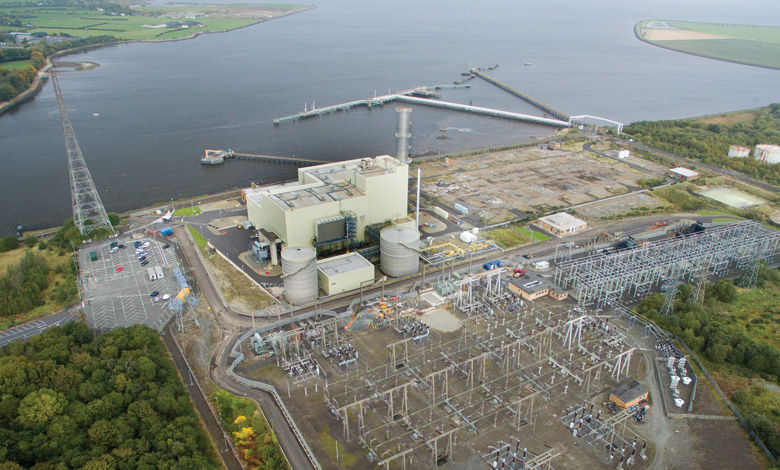
Offshore wind
In January 2023, The Department for the Economy (DfE) and The Crown Estate announced a statement of intent to establish offshore wind leasing in Northern Ireland. It followed a clear policy signal in the Energy Strategy which encouraged the development of an action plan to deliver 1GW of offshore wind from 2030.
Dollard welcomes work between The Crown Estate and the Department for the Economy to progress consenting rights off Northern Ireland’s coast and says that ESB stands ready to invest and harness the offshore resources, once agreements have been reached.
In August 2022, it was announced that ESB had been granted a lease option for a 500MW offshore wind project in Scottish waters off the east coast of Shetland, as part of a process by Crown Estate Scotland to offer development rights for in excess of 26GW of new offshore wind projects.
“The ScotWind process has been a very successful one, delivered by the Crown Estate Scotland. There is the potential for that process to form a template for any future process for Northern Ireland. We would like to see this process move at pace.”
In a sign of ESB’s eagerness to drive generation, Dollard explains that while the organisation awaits the frameworks being put in place to develop offshore wind infrastructure, the proximity of ESB’s INTOG project in Scottish waters to the Foyle Estuary could see future exportation of electricity to Northern Ireland, subject to the appropriate development policies.
Elaborating further, Dollard says that such is the potential for renewable generation surrounding Foyle Estuary, ESB is investigating the area’s potential as a renewable hub, utilising the concentration of industry around the Foyle and the existing Coolkeeragh power station assets, to pilot, develop, and scale up future renewable technologies.
“It is an exciting prospect,” he says. “It is a model that has been used elsewhere, for example, in Great Britain where renewable hubs are being created near the Humber River to utilise its industrial concentration and surrounding offshore renewables.”
ESB’s experience in developing offshore wind projects speaks for itself. Involved in offshore wind generation since 2017, the company has a significant number of planned projects for Ireland and the UK.
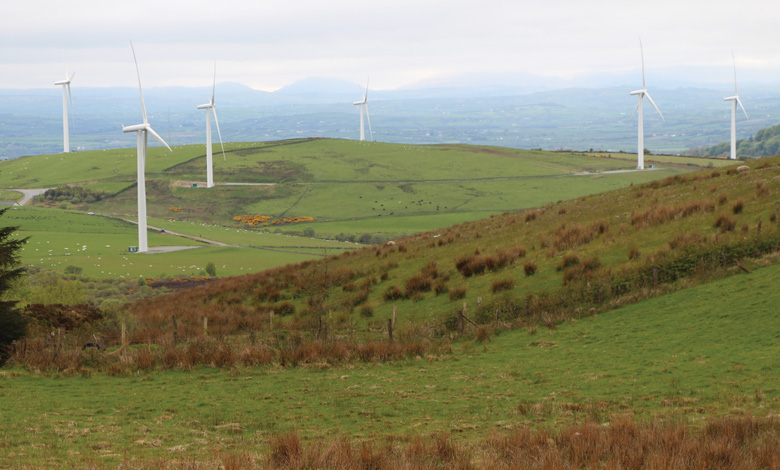
Projects include the Galloper Wind Farm, for which ESB is part of a consortium generating 353MW off the coast of Suffolk; Inch Cape, in partnership with Red Rock Power Limited, a 1.1GW project off the Angus coastline in Scotland; and Neart na Gaoithe, a 450MW project off the Fife coast, alongside EDF Renewables UK.
In Ireland, planned projects include Clogherhead Offshore Wind and Oriel Offshore Wind, located off the coast of County Louth, and Celtic Offshore Wind, east of Cork and the south of Waterford. Meanwhile, feasibility work is being carried out on the likes of the flagship Moneypoint Offshore Wind Project, off the west coast of Ireland, the Loch Garman Offshore Wind Farm near County Wexford, and others.
Additionally, ESB is partnering with Ørsted to develop a potential 5GW pipeline of offshore wind development projects off the Irish coast, which includes complementary renewable hydrogen projects.
“We are very active in the offshore wind market; we bring a wealth of experience, and we would love to be involved in a circa 500MW project in Northern Ireland in the near future.”
Renewable enabling technologies
Dollard is well aware that generation in itself will not be enough to drive net zero and to this end, ESB is focused on those enabling technologies that can facilitate higher penetration of renewables on the electricity grid and provide stability.
At the end of 2022 a large synchronous compensator became operational as part of ESB’s plan to transform its Moneypoint site in County Clare into a green energy hub.
With the rising share of renewable power such as wind and the shutdown of conventional plants, synchronous compensators are playing an increasingly important role in grid operations.
“In addition to identifying new sites in strategic locations, we are also developing the most cost-effective approach to rolling out the technology across ESB infrastructure in key locations which will help transform the power system for future generations ensuring ongoing resilience, effective operation and allowing the grid to exceed its current renewables penetration limit,” explains Dollard.
Highlighting that ESB is intent on developing battery solutions and synchronous compensators in all its core markets, Dollard points to the rollout of a programme of 300MW of batteries across five sites in the Republic of Ireland.
Discussing the important role of batteries in a future decarbonised system, he adds: “In a net zero world, batteries can provide a number of services in the form of capacity, but also frequency response and those services that increase grid stability.
“Batteries are still a relatively new technology, but we are starting to see them being deployed at scale, which provides for learnings. We believe that there are huge opportunities at sites like Coolkeeragh and other potential sites in Northern Ireland for enabling technology to be deployed.”
Dollard stresses the importance of such technology in providing reliability in a future energy system fuelled by renewables so that consumer and investor confidence is retained.
Highlighting that buy-in and public confidence is critical to any future infrastructure development, he outlines ESB’s understanding of the importance of community engagement in the development of renewables.
“Our reputation as a developer is high because, from the outset, we recognised the importance of community engagement in project delivery. If you intend to operate assets over the long term, which we do, then there must be buy-in. That can be more challenging depending on the project but if Northern Ireland is going to roll out on such a large target as 2GW of renewable generation, then community engagement will be key to progress.”
Hydrogen
Dollard believes that renewable generation and enabling technologies are two of the core pillars of achieving net zero. The third, he says, is the decarbonisation of dispatchable generation. In the past, that generation has been fossil fuelled, such as natural gas.
ESB is of the belief that hydrogen produced from renewable electricity will play a critical role in the decarbonisation of many sectors and plan to use their existing capabilities and future renewable growth to become a leading player in large scale renewable hydrogen production, to meet the energy requirements of Ireland’s future zero carbon economy.
ESB is actively looking at how it might burn hydrogen in its gas-powered plants, including Coolkeeragh, and hope to conduct tests in the next few years before moving towards live consumption.
While onshore wind possesses the potential to create green hydrogen, it is widely accepted that the volumes required to create a hydrogen economy, and power Coolkeergh, for example, mandates large scale offshore wind generation.
“If you want a green hydrogen economy, the no regrets move is offshore wind development at scale. For all of the markets we are operating in, offshore wind is the precursor to a large-scale green hydrogen economy.
“While Great Britain has a road to travel in terms of their hydrogen strategies, they are probably the leaders in Europe currently in relation to their support structures and frameworks. Policymakers north and south in Ireland are watching that closely and can learn from that.”
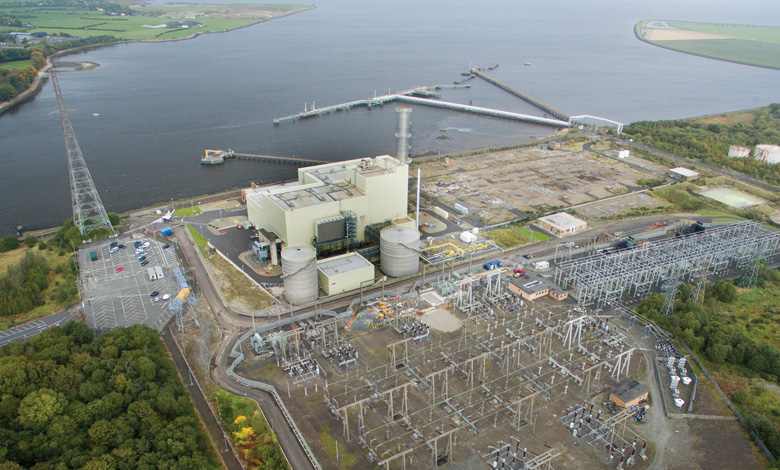
Reiterating how ESB’s experience in other markets can benefit Northern Ireland, he points to ESB’s gas-fired Carrington Power Station which opened in 2017, which is part of a recently developed hydrogen hub in the area.
It is hoped that Carrington will be able to burn a green hydrogen blend by 2028. “We have similar plants in Ireland and once we have completed those tests, we will be seeking to make those plants hydrogen-ready,” he explains.
With market creation viewed as one of the biggest challenges of a green hydrogen economy, Dollard explains that ESB’s link between green hydrogen production and possessing the infrastructure to act as an offtaker of that production, means that the organisation is primed to play a role in every part of the net zero journey.
Concluding on a 10-year outlook for ESB in Northern Ireland, Dollard says: “At ESB we are long-term players, and our vision stretches to the long-term ambition of net zero and beyond.
“As we strive to reach net zero, we want to build sustainable relationships with industry, the consumer and the environment. We have an active and investment-heavy footprint in Northern Ireland and view the region as a really important market in our growth ambitions.
“Over the next decade, if we are able to point to the creation of 500MW of offshore wind projects and 300MW of onshore projects, alongside the deployment of renewable enabling technologies, then it will be a journey well made.”
Jim Dollard was appointed to the position of Executive Director, Generation and Trading in May 2018. Prior to this he held the position of Executive Director for Business Service Centre (BSC) and Electric Ireland for five years. An accountant, he began his career in ESB in 1992 and has held a number of senior management positions throughout the group in both financial and managerial roles. Dollard holds a BComm and a master’s in business studies from UCD.


